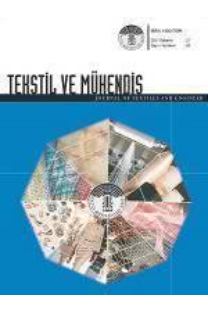Tekstil Takviyeli Beton Üretiminde Kullanılmak Üzere Yüksek Performanslı Hibrit İplik Geliştirilmesi Ve Üretim Parametrelerinin Optimizasyonu
Tekstil takviyeli beton, hibrit iplik, karıştırma (commingling) yöntemi, taguchi tasarımı
High Performance Hybrid Yarn Development and Optimization of Production Parameters For Using In Textile Reinforced Concrete Production
___
- 1. Bakis, C.E., Bank, L.C., Brown, V.L., Cosenza, E., Davalos, J.F., Lesko, J.J., Machida, A., Rizkalla, S.H., Triantafillou, T.C., (2002), Fiber-Reinforced Polymer Composites for Construction- State of the Art Review, Journal of Composites for Construction, 6(2): 73-87.
- 2. Bagherzadeh, R., Sadeghi, A.H., Latifi, M., (2011), Utilizing polypropylene fibers to improve physical and mechanical properties of concrete, Textile Research Journal, 82(1): 88-96.
- 3. Yao, W., Li, J., Wu, K., (2003), Mechanical properties of hybrid fiber-reinforced concrete at low fiber volume fraction, Cement and Concrete Research, 33: 27–30.
- 4. Hartig, J., Häußler-Combe, U., Schicktanz, K., (2008), Influence of bond properties on the tensile behaviour of Textile Reinforced Concrete, Cement & Concrete Composites, 30: 898–906.
- 5. Chudoba, R., Vorechovsky, M., Konrad, M., (2006), Stochastic modeling of multi-filament yarns. I. Random properties within the cross-section and size effect, International Journal of Solids and Structures 43: 413–434.
- Tüm referanslar makale dosyası içerisinde yer almaktadır!
- ISSN: 1300-7599
- Yayın Aralığı: 4
- Başlangıç: 1987
- Yayıncı: TMMOB Tekstil Mühendisleri Odası
Ecem AKIN, Sibel DEMİROĞLU MUSTAFOV, Elif ALYAMAÇ SEYDİBEYOĞLU, Mehmet Özgür SEYDİBEYOĞLU
Rıza ATAV, Aylin YILDIZ, Derman VATANSEVER BAYRAMOL, Ahmet Özgür AĞIRGAN, Uğur ERGÜNAY
Kumaşlarda Hatayı Yerel Olarak Arayan Denetimsiz Bir Sistem
Fatma Günseli YAŞAR ÇIKLAÇANDIR, Semih UTKU, Hakan ÖZDEMİR
ÇOK ELYAFLILAR ANLAŞMASI ÜLKELERİN TEKSTİL SEKTÖRÜNDEKİ UZMANLAŞMA DÜZEYİNİ NASIL ETKİLEMİŞTİR?
Birol ERKAN, Eli Tuğçe Bozduman
Çok elyaflılar anlaşması ülkelerin tekstil sektöründeki uzmanlaşma düzeyini nasıl etkilemiştir?
Birol ERKAN, Elif Tuğçe BOZDUMAN
KUMAŞLARDA HATAYI YEREL OLARAK ARAYAN DENETİMSİZ BİR SİSTEM
Fatma Günseli YAŞAR ÇIKLAÇANDIR, SEMİH UTKU, HAKAN ÖZDEMİR
EFFECT OF LOOP LENGTH ON THERMAL COMFORT PROPERTIES OF MESH KNITTED FABRICS
